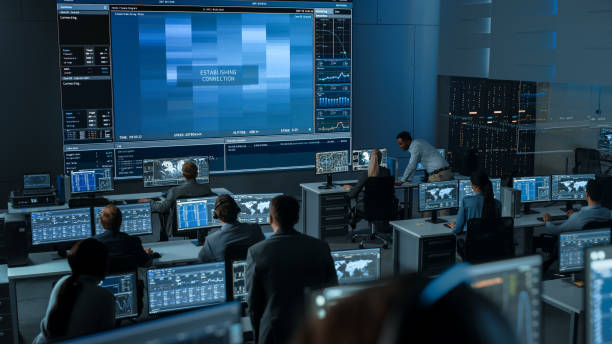In the heart of any control center lies the pivotal nexus where operators orchestrate critical tasks, monitor vital systems, and make split-second decisions. The workspace within a control center is more than just furniture; it's the command center for ensuring seamless operations and safeguarding mission-critical functions. To optimize this vital space, selecting the right standing desks is paramount. This selection criteria guide serves as a compass, outlining the key factors to consider when choosing standing desks that align seamlessly with the dynamic demands of a control center environment. From ergonomic excellence to integration capabilities, each criterion is designed to empower operators with a workspace that not only enhances productivity but also prioritizes their well-being. As we embark on this journey, let's delve into the essential elements that define the optimal standing desk for a control center.
1. Ergonomic Design:
- The standing desks should be ergonomically designed to promote proper posture and reduce physical strain for operators who will be using them for extended periods.
2. Height Adjustability:
- Each desk should have adjustable height settings to accommodate a range of operator heights and preferences, ensuring a comfortable and customizable workspace.
3. Stability and Durability:
- The desks should be stable and sturdy, capable of supporting the weight of equipment and providing a secure platform for monitors, keyboards, and other essential tools.
4. Weight Capacity:
- The desks should have a sufficient weight capacity to support the equipment and accessories typically used in the control center environment, including multiple monitors, control panels, and other devices.
5. Cable Management Solutions:
- Effective cable management features should be in place to keep cords organized and prevent tangling, ensuring a neat and clutter-free workspace.
6. Integration with Control Room Layout:
- The desks should be designed to seamlessly integrate into the existing control room layout, allowing for efficient use of space and ensuring an optimized workflow.
7. Electrical Outlets and USB Ports:
- The desks should be equipped with integrated electrical outlets and USB ports to conveniently power and charge devices without the need for additional power strips or adapters.
8. Mobility and Accessibility:
- Consider whether the desks need to be mobile or have wheels for easy reconfiguration or maintenance access within the control center.
9. Noise Level:
- If noise is a concern in the control center environment, select standing desks with quiet and smooth height adjustment mechanisms to minimize disruptions.
10. Safety Features:
- The desks should have built-in safety features, such as anti-collision technology, to prevent accidents or damage when adjusting the desk height.
11. Warranty and Support:
- Ensure that the manufacturer provides a warranty and reliable customer support in case of any issues with the standing desks.
12. Cost and Budget Considerations:
- Evaluate the cost of the standing desks in relation to the allocated budget, considering factors like quantity, additional features, and any potential long-term cost savings from ergonomic benefits.
13. User Feedback and Reviews:
- Consider seeking input from potential users or conducting a pilot test to gather feedback on the standing desks' usability and comfort.
14. Environmental Considerations:
- Evaluate whether the standing desks are made from sustainable materials or have eco-friendly certifications to align with environmental initiatives.
15. Aesthetics and Design:
- While functionality is paramount, consider the aesthetic appeal of the standing desks to ensure they complement the overall visual design of the control center.
By carefully considering these selection criteria, the control center can make an informed decision when choosing new standing desks to enhance the efficiency, comfort, and overall functionality of the workspace.

